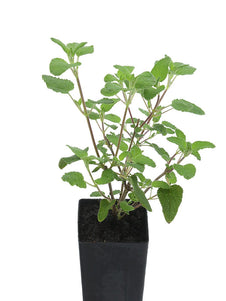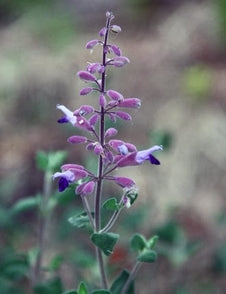



Salvia semiatrata
Salvia semiatrata

- Low stock - 6 items left
- Inventory on the way

Usually available: All year
Life cycle: Perennial
Height: 1 -1.8m
Position: Sun / part shade
Soil preference: Well drained
This is how we pack and send your Herb Plants to all states except TAS & WA
You will receive
- 1 Salvia Semiatrata Herb Plant in a 50 X 75mm tube - General growing instructions
All of our Herb Plants are grown organically with certified organic potting mixes and fertilizers
Botanical Name: Salvia semiatrata
Salvia semiatrata is a tall growing perennial salvia reaching 1.8 meters by 90 cm wide in the ideal, native environment. In cultivation, this well branched and shrubby sage is often limited to 1 meter. The 2.5cm long leaves are a bright, grass like green ranging to yellow-green, creating a very showy appearance. The triangle, or deltoid leaves, are held opposite, but grow in small clusters. The surface of the leaves is rugose and the underside covered in many small hairs, giving a cream appearance and highlighting the veins.
The inflorescences of this salvia are up to 15cm long, with whorls of 1-3 flowers in each verticil or whorl. Each tube-like corolla is 2.5 – 5cm long, with the upper lip described as a luminous dark violet or magenta and covered in tiny hairs, while the lower lip is a dusky lavender colour. Whatever the preferred purple designation, the colour range is used to stunning effect. The calyces are 1.3 cm long, covered in hairs and are a rich magenta colour. The eye catching blooms appear autumn, sometimes with a smaller flush in spring.
Salvia semiatrata is also called Pine Mountain Sage after the type of native habitat it prefers. It grows at elevations of 1000-2000 meters in the rocky soils of the Sierra Madre de Sur in the Mexican state of Oaxaca. Preferred positions include the edge of pine forests and also on limestone cliffs, and the dry exposed cactus scrub habitat. The species name is derived from the word ‘semiatra’, which refers to the corolla tube and the bi-colour pattern. These flowers are also very attractive to bees, butterflies and birds.
The salvia family has over 900 members with an extensive history as culinary, medicinal and ornamental plants. Ornamental salvias have become collectors items, as gardeners try to find a place in their garden for each and every one. There are salvias that will suit every type of soil and climate. More information on the Salvia genus and Common Sage (Salvia officinalis) may be found on our Common Sage page.
Growing Conditions
Salvia semiatrata is able to take semi-shade, but full sun is necessary for the full development of both the plant and flowers. The best results will be obtained from a rich, well-drained soil supplied with regular water. However, this plant is drought tolerant and can work well in dry gardens. Running is recommended in spring to keep the plant compact and to encourage flowering. The flowers of this salvia are good for use as cut flowers.
All information provided on this website is for informational purposes only. Please seek professional advice before commencing any treatment.






